HACK & TIP
Best Natural Remedies for Mosquito Bite Itches

What do you do when bitten by a mosquito? Scratching is a natural reaction that everyone will act on first. However, your skin also will get hurt by those itches. Fortunately, here are the Best natural mosquito bite remedies that don’t contain chemicals so you can use them without faring.
Lemon slices, ice, toothpaste, and more, are safe, easy to find, and apply, sometimes they are available in the home. Now on, instead of using some medicines, they are safe methods to treat mosquito bites effectively as well as protect your skin. After trying, if they are useful, let’s save and apply when you are attacked by mosquitos. Don’t forget to share them with your friends and neighbors.
#1 Lemon and Lime Juice
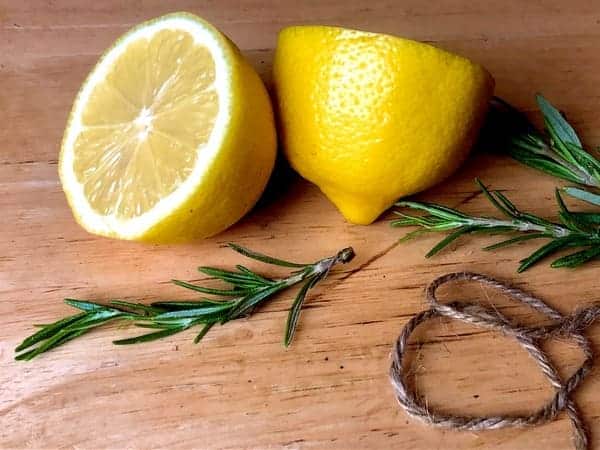 Image source: healthyfoodfactory
Image source: healthyfoodfactory
These can help relieve the itch, but only try this remedy if you haven’t already scratched the bites. Applying citrus juice to open cuts will sting. Also, only use lemon and lime juice if you’re going to be indoors for a while. Applying this outside can lead to severe sunburns.
#2 Aloe Vera
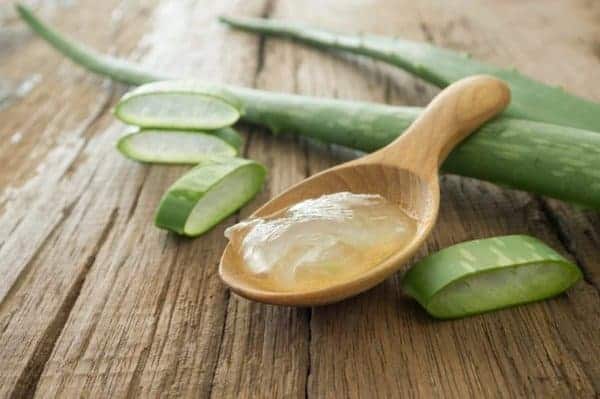 Image source: thehealthy
Image source: thehealthy
If you have an aloe vera plant, cut a meaty portion of a leaf to extract the gel. You can apply the gel directly to the bite, or put it in the fridge for 10 minutes to cool before applying. The gel’s natural antiseptic qualities will reduce swelling and itching.
#3 Vinegar
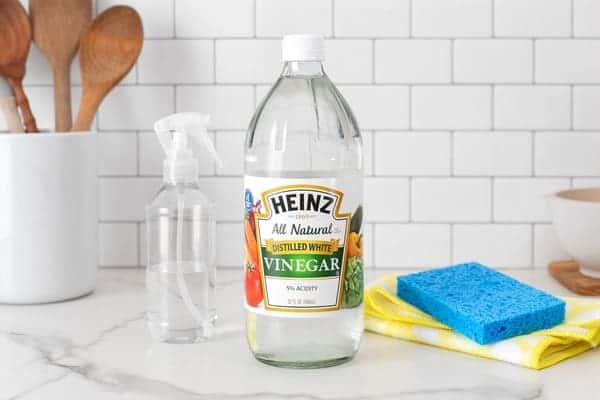 Image source: thekitchn
Image source: thekitchn
Vinegar’s antibacterial properties make it ideal for bug bites. Put a few drops on a cotton ball and wipe it on bites.
#4 Toothpaste
 Image source: healthline
Image source: healthline
Applying regular toothpaste to the bite site can help relieve the itch. This also can help reduce the pain of a fire ant bite
#5 Essential Oils
 Image source: medicalnewstoday
Image source: medicalnewstoday
If you happen to have tea tree oil in the house, its natural antiseptic properties can help relieve the itch. Lavender oil also has healing benefits. A dab of lavender oil can help reduce swelling and relieve discomfort.
#6 Antihistamine Cream
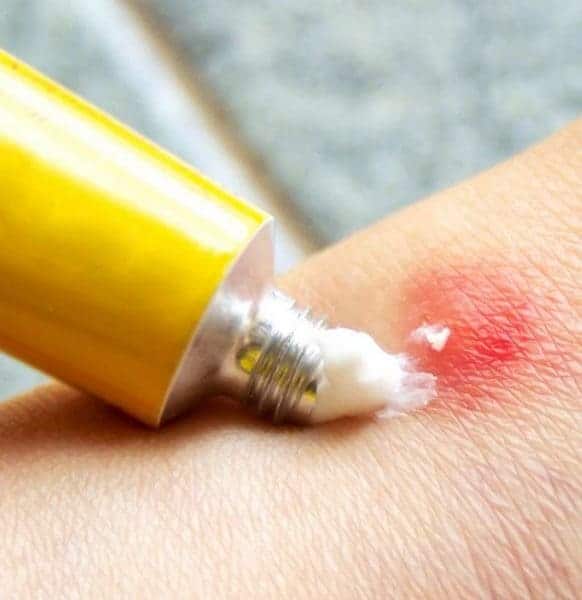 Image source: medicalnewstoday
Image source: medicalnewstoday
An over-the-counter antihistamine cream will help to soothe the itch. Keep a stick or a tube handy when you’re spending a lot of time outdoors.
#7 Honey
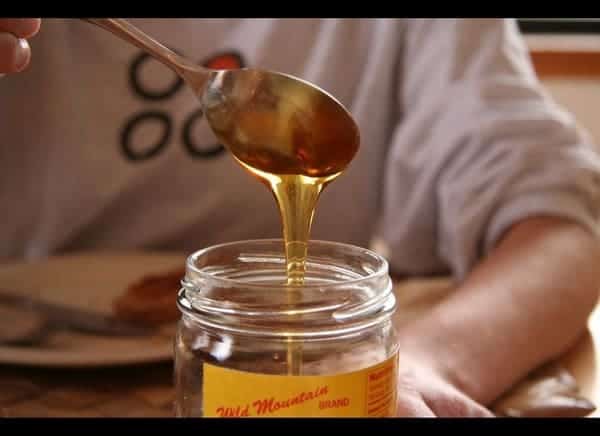 Image source: huffpost
Image source: huffpost
This golden goo can be used as a topical antibacterial ointment to keep bite wounds clean, and its anti-inflammatory properties will help lessen swelling.
#8 Baking Soda and Water
 Image source: homecookworld
Image source: homecookworld
Make a paste with baking soda and water, apply it to the bite and leave for a few minutes before washing off. Baking soda and water make an alkaline solution, which neutralizes the pH of the skin to provide itch relief.
#9 Teabags
 Image source: southernliving
Image source: southernliving
You can put tea bags on your eyes to reduce puffiness. They work the same magic on mosquito bites. Take a cool, used tea bag and place it on the bite.
#10 Ice or a Cold Compress
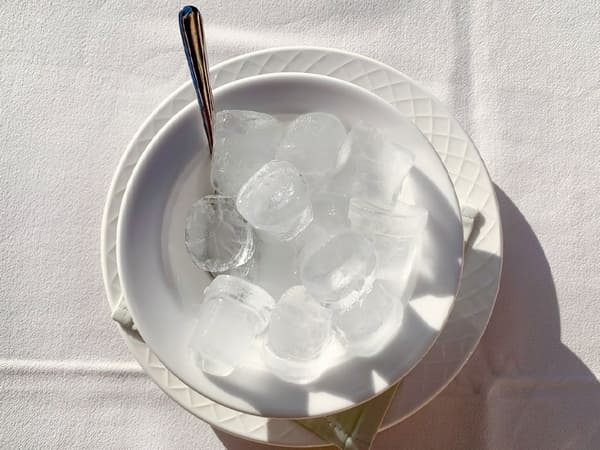 Image source: medicalnewstoday
Image source: medicalnewstoday
A sure-fire way to soothe a mosquito bite fast is to give it a chill pill. The cold sensation will help numb the itch and help relieve any swelling associated with the bite.
#11 A Slap
 Image source: story.motherhood
Image source: story.motherhood
A pinch or a slap to the area will register as pain in your brain, and because your brain can only register one sensation at a time, it will take the place of the itch.
GARDEN
12 Planting Hacks for a Free Vegetable Garden
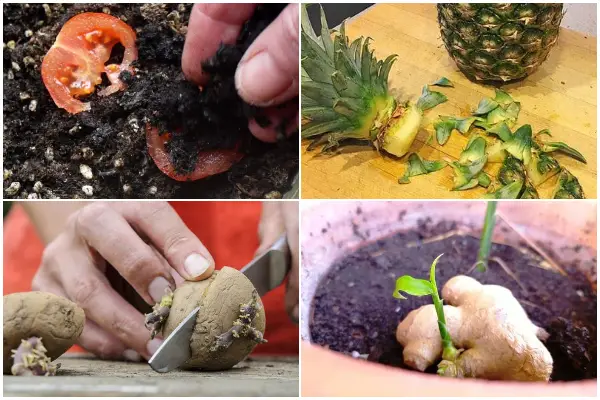
Your gardening work will become extremely interesting and easy after reading our planting hacks today. From now on, you don’t have to spend an amount of money to buy vegetables, you can grow fresh and organic foods right in the garden. They are scraps like the head of pineapple or seeds that are available in fruits or flowers. Then, you make it easy with a few steps and simple materials such as paper towels, cups, bowls, and water. In order to have your own free vegetable garden, check them out to know more.
#1 Ginger
 Image source: ruralsprout
Image source: ruralsprout
Ginger is a common herb that brings many health benefits. You can easily get fresh ginger in the home by growing the pieces that have buds. Then, put them into potting soil on top so their cut cheeks are faced down, don’t forget thorough watering and good drainage. Place the pot where there’s filtered sunlight for its happy growth.
#2 Cucumbers
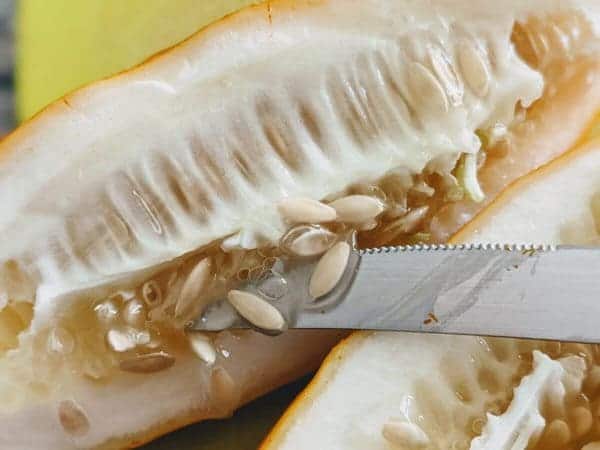 Image source: bunnysgarden
Image source: bunnysgarden
Cucumbers are great veggies for summer dishes. To have fresh and organic fruits, grow your own cucumber garden. Simply, scoop out the seeds from the cucumber, then add them to the water. Health seeds at the bottom that settle themselves are good choices you should grow.
#3 Onions Sprouts
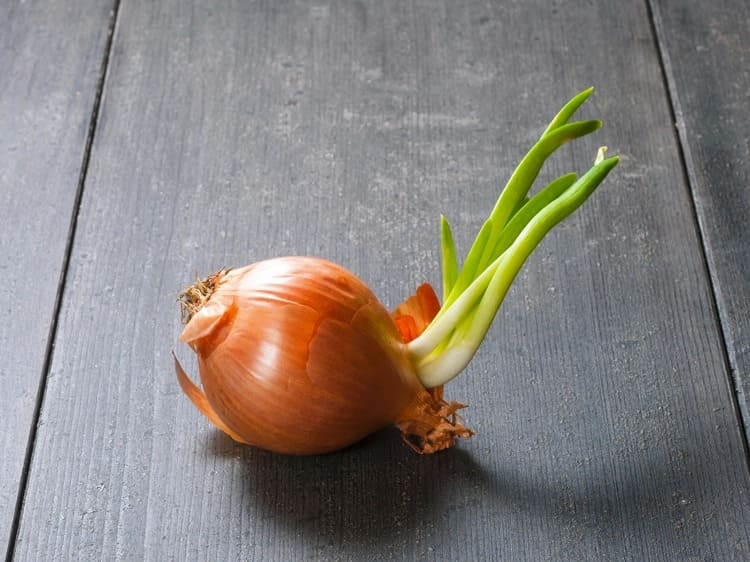 Image source: firstforwomen
Image source: firstforwomen
Have you ever grown onions? Try one time because growing onions is extremely easy. Planting them in the soil, watering them well, and placing them where it gets partial sunlight, are all you have to do for your beautiful onions.
#4 Tomato Slices
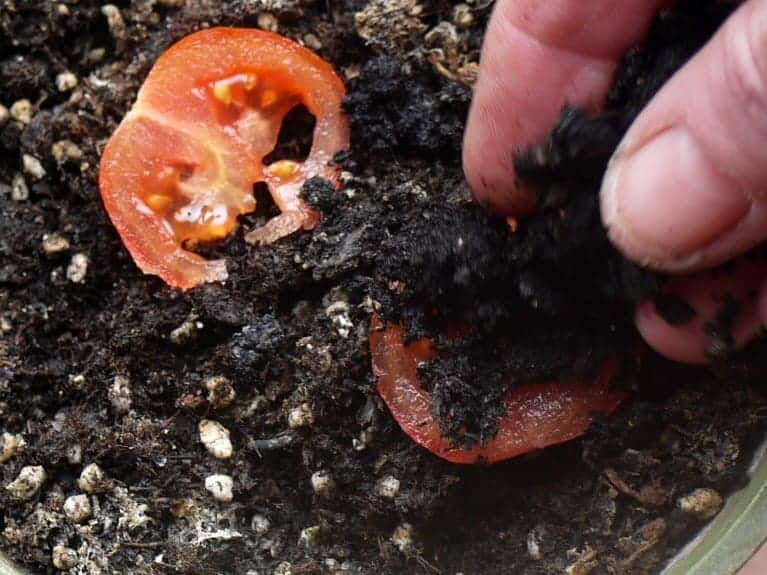 Image source: thriftyfun
Image source: thriftyfun
Eating fresh tomatoes right in your garden? Why not? Growing them at home with our simple hack. Firstly, cut 1/4 inch thick slices of fresh tomato, and lay them on top of the container. Then, cover each slice in soil, and spray water to give it wet so that when you cover all sides, they will be well-rooted plants.
#5 Squash
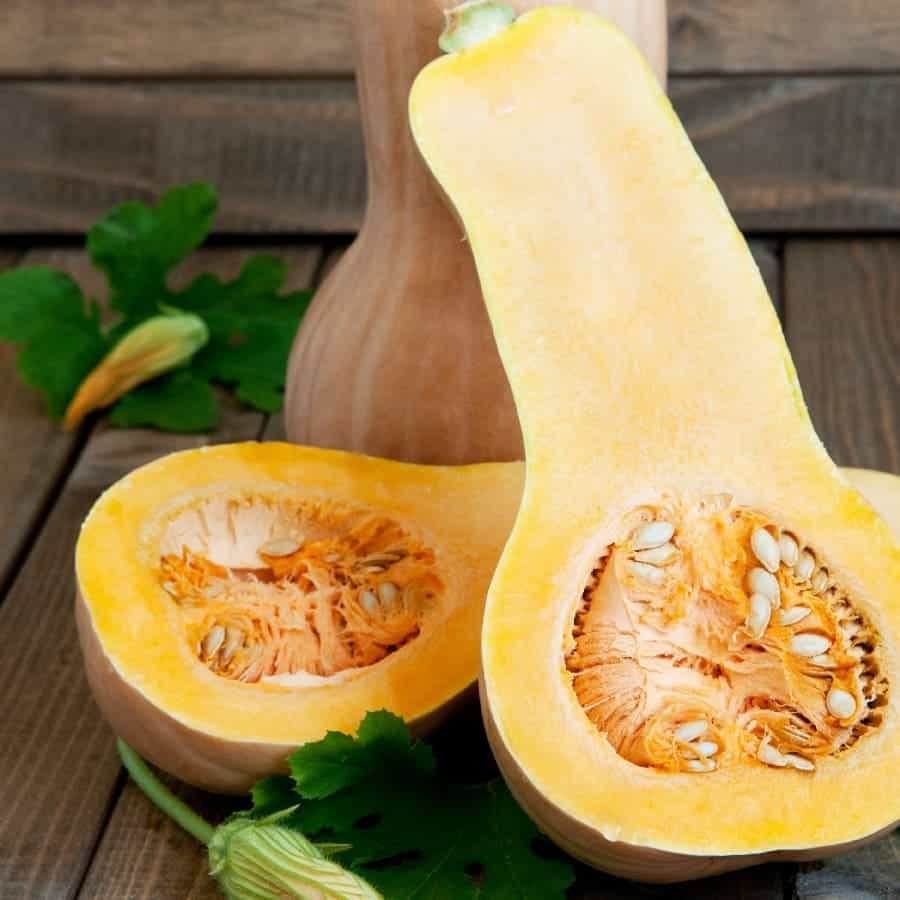 Image source: edenbrothers
Image source: edenbrothers
To grow your new squash plants, cut away at its fruit. Scoop out any seeds, spread them across an organic potting mix, and cover them with soil and thorough water. You can plant them both outside and inside as long as the warmth is enough (60 F/15 C).
#6 Eggplants
 Image source: harvesttotable
Image source: harvesttotable
To have new eggplant plants, you can do these simple hacks here. Firstly, cut on the bottom of the eggplant, then microwave for 2 minutes. Peel it and remove its seeds, add them to water and strain it. Then, take an eggshell, fill it with potting mix and sow seeds. Around 12-14 weeks, you will have fresh home-grown eggplants.
#7 Pineapple
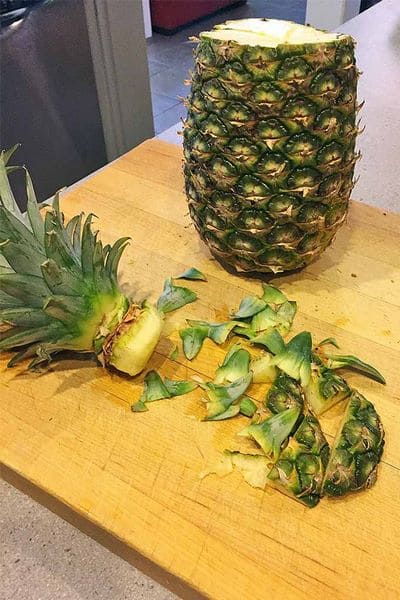 Image source: gardenerspath
Image source: gardenerspath
Pineapple is easy to grow. Simply, make cut the head of fresh pineapple, and put it in potting mix with some water. It will take around 2 weeks to give you a new plant.
#8 Potato Tip
 Image source: gardenersworld
Image source: gardenersworld
Love growing potatoes? Make some steps below to have your new potato plants. Simply, put the potatoes into halves, fill up with potting soil and plant them cut-side down.
#9 Lemon
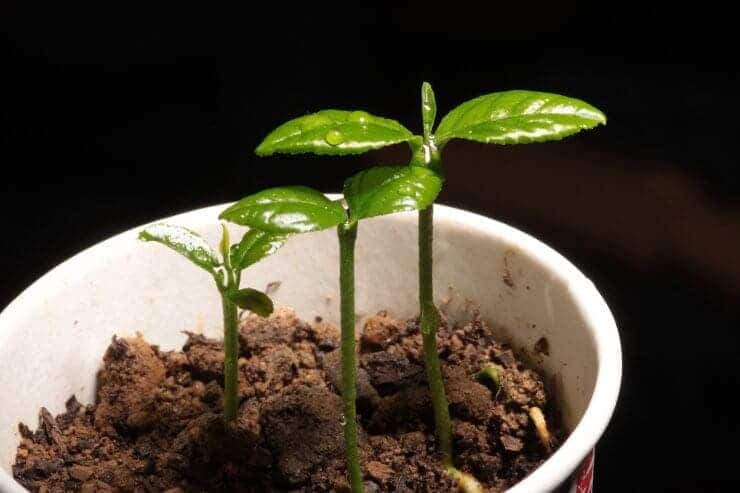 Image source: foodgardening
Image source: foodgardening
The next time, after squeezing fresh lemons, just save some lemon seeds. Sowing the seeds in an open pot with moist soil and placing the window sill, when they get the right conditions, their roots will appear to form young plants.
#10 Marigold
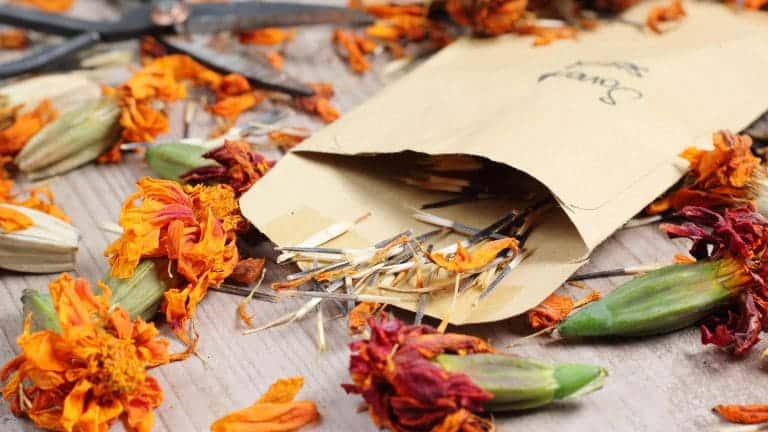 Image source: gardeningetc
Image source: gardeningetc
Each dried marigold flower has seeds in them, and to have new plants you can use them to start sowing the seeds. Simply, rub dried flower petals over the planting bed or pot. Then, wait and watch what will happen in the next few days.
#11 Bittermelon
 Image source: theayurveda
Image source: theayurveda
When your bittermelon is overripe, it is a great way to start new plants. Simple, cutting it open, taking out the seeds, and sowing them in a pot, even you could just plant an entire piece.
#12 Lavender
 Image source: tidbits-cami
Image source: tidbits-cami
Dried lavender flowers have seeds in them, which you can use to start new plants. Only need to rub the bloom in your palm to get them out, and spread them on wet paper towels overnight before transferring them into the soil. The growing method will give you an endless supply of lavender plants for a lot of amazing uses.
GARDEN
12 Available Seeds from Your Kitchen

Have you ever thought that you will have bountiful harvesting with seeds you can find easily in your fridge or pantry? They grow easily to give you more free and organic foods. Instead of tossing them out as waste, save and grow them. Reading our list today to explore them!
#1 Bean Sprout
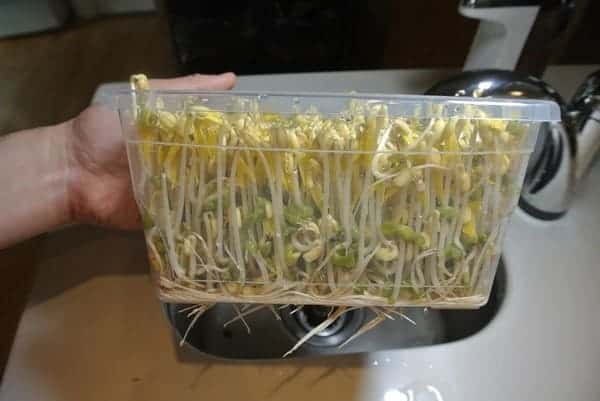 Image source: instructables
Image source: instructables
Bean Sprout can be used from the pantry. First, let’s soak your beans in a jar with shallow water and leave overnight. The next morning, drain them and cover these beans with a thick cotton towel or cloth. Put them in a container about for 8-12 hours, the process is repeated until the sprouts appear.
#2 Tomato
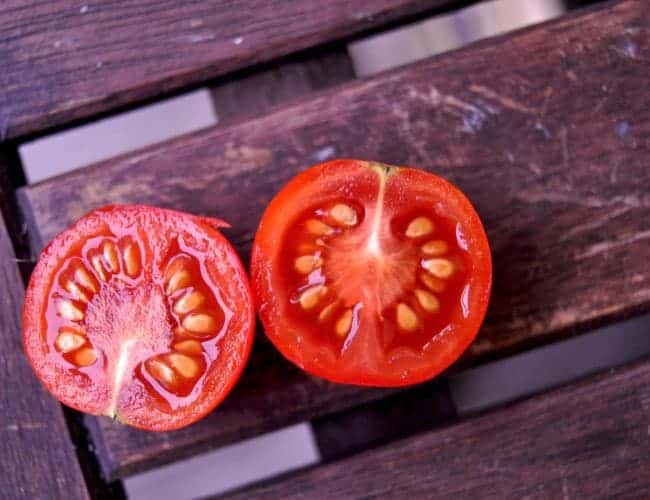 Image source: almanac
Image source: almanac
After eating your fresh tomato, you can start planting new plants by sowing its seeds. They are so easy to germinate as long as you give them in warm temperatures. And you can start planting the seeds indoors in a potting mix. Then cover with plastic for 5-7 days, once the seeds begin to sprout, remove the plastic wrap, and expose the tomato plant to the sun for 3 hours per day. When they reach 2 inches above the soil, transfer these new plants to pots.
#3 Pepper
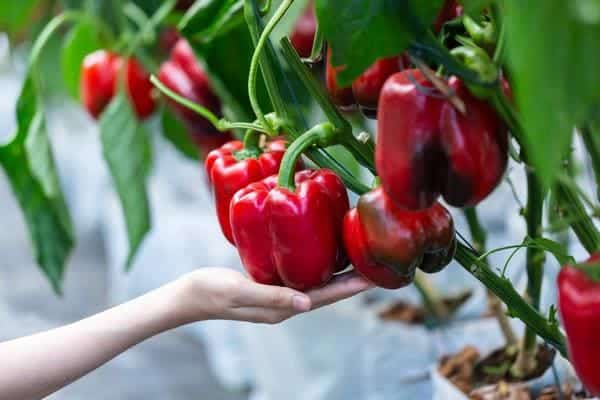 Image source: backtotheroots
Image source: backtotheroots
Like tomatoes, peppers are easy to grow from their seeds and also grow fast. Let’s sow these seeds in moist and fertile soil, 1/4-1/2 inches deep, and under direct sunlight. Regularly watering them both in planting and throughout their growing period.
#4 Peas
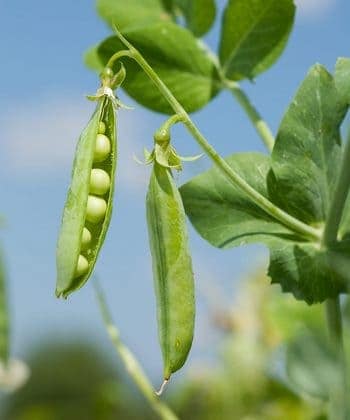 Image source: countrylife
Image source: countrylife
To sow the seeds of the peas, choose a well-drained, nutrient-rich soil, and give them a sunny spot. Then, water them properly, after around 10-14 days, your seeds will sprout.
#5 Sesame
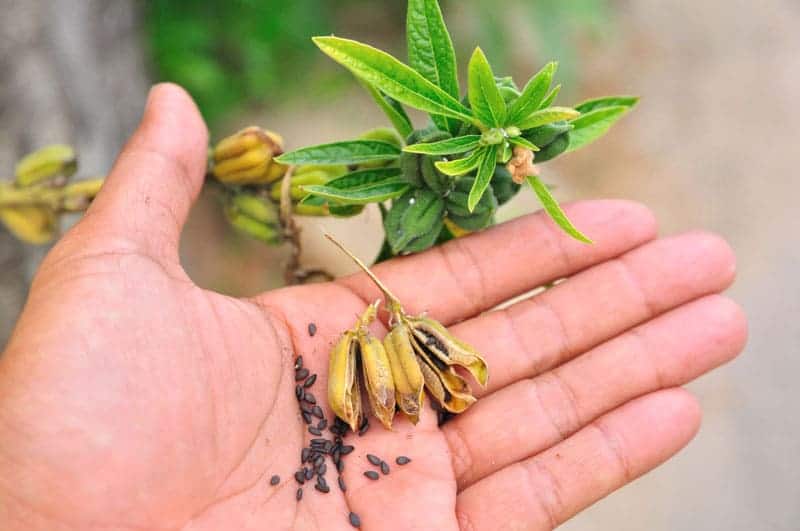 Image source: saucydressings
Image source: saucydressings
Sesame is one of the best nutrient foods that pack many sources of fiber, protein, and vitamin B. And you can easily grow new plants by sowing its seeds from the pantry to have tasty dishes daily. For planting them, let’s sow them indoors first. Give your pots moist soil, and then when the seeds germinate place them outside at a warm temperature.
#6 Cherry
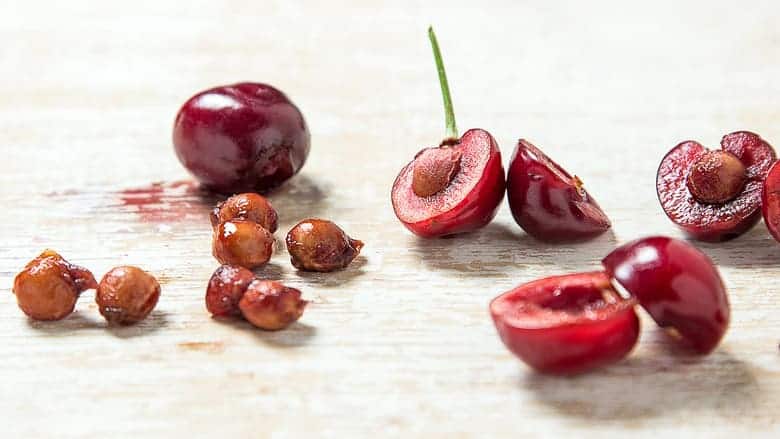 Image source: tastingtable
Image source: tastingtable
Cherry can be planted from its seeds but it needs enough time to become a full-grown tree. For sowing, wash the seeds, let them dry, then wrap them in a cotton cloth. In the fall, sow them in pots outside, and when spring comes, these seeds will germinate. Then, you can transplant these young plants into the garden once they attain a height of 10-12 inches.
#7 Avocado
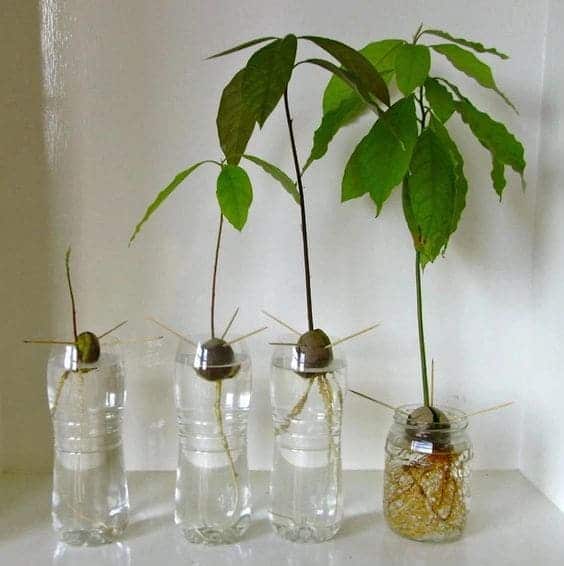 Image source: lethow
Image source: lethow
Avocado can grow easily from its seeds. To start, rinse the seeds to remove the extra flesh, then insert toothpicks into the seeds and suspend it from the edge of a bowl of water. Place in a warm spot with indirect sunlight, they will root for about 6 weeks, then transplant the new plant to the soil.
#8 Pumpkin
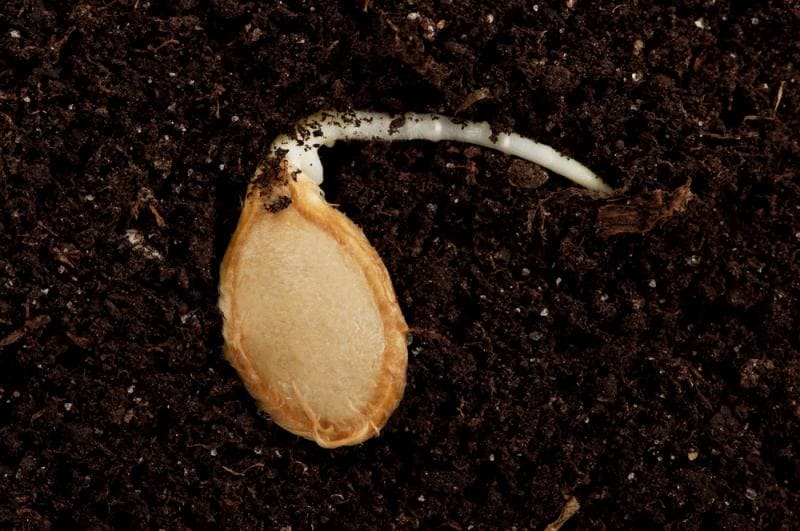 Image source: ekologia
Image source: ekologia
The seeds of the pumpkin can germinate easily when sown in the ground after around 7-8 days.
#9 Papaya
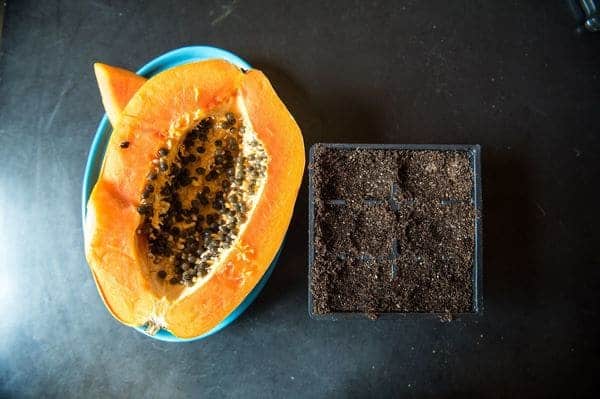 Image source: inquirer
Image source: inquirer
Papaya is a fast-growing plant and is easy to grow from seeds. For the first step, wash the seeds to remove the gelatinous coating before sowing them. Next, soak them for 2 days, then keep the seeds in a moist cotton cloth for 1-2 days before directly sowing the seeds in the ground or a pot.
#10 Lemon
 Image source: talesofaplantgeek
Image source: talesofaplantgeek
For growing lemon seeds, choose luscious lemons. Then, remove the seeds and rinse them thoroughly with water to prevent any fungal disease. To help increase the chances of germination, plant the seeds immediately and don’t allow them to dry out. Give them light soil and cover the pot with plastic wrap to encourage water retention. When these seeds germinate, remove the wrap and move the plant in bright light.
#11 Apple
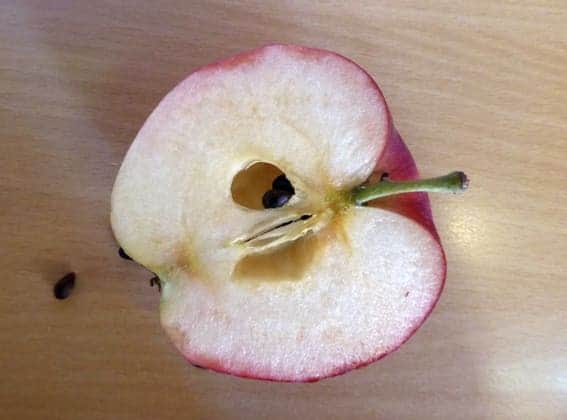 Image source: gardenguides
Image source: gardenguides
For sowing the seeds of the apple, let’s dry and store them in a fridge for 6 weeks first. Next, use a zip lock pouch with moist, sterile potting soil, and peat moss, after that take the seeds out from the fridge for sowing.
#12 Peach
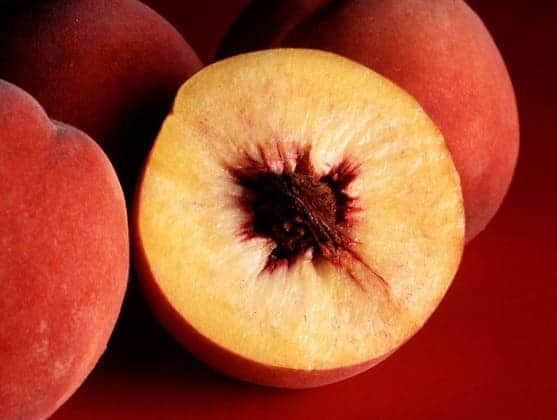 Image source: britannica
Image source: britannica
If you are patient, you can have a peach plant after several years. So, the next time you eat peaches, instead of throwing their seeds, save them and plant them. For sowing, dry these seeds very well then grow them in nutrient-rich soil, 3-4 inches deep in fall. Give them water when the soil appears dry, and you will see the seeds germinate in spring.
GARDEN
Top 10 Gardening Hacks to Save Money, Time, and Effort
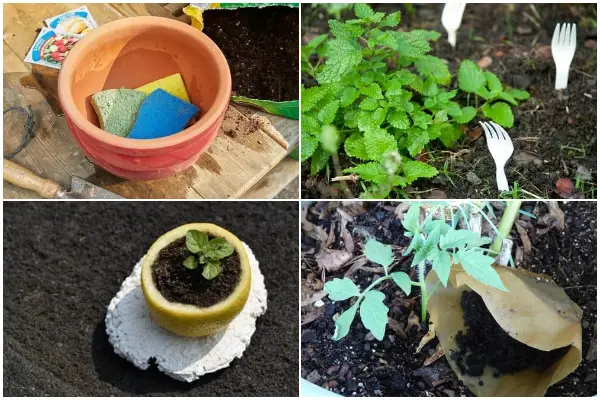
Have you ever thought that plastic forks, diapers, sponges, coffee filters, and tablecloths can be more useful than their own original function? Top 10 Gardening Hacks to Save Money, Time, and Effort are great answers! Apply these ways, your gardening works will be simpler and easier.
#1 Use Sponge
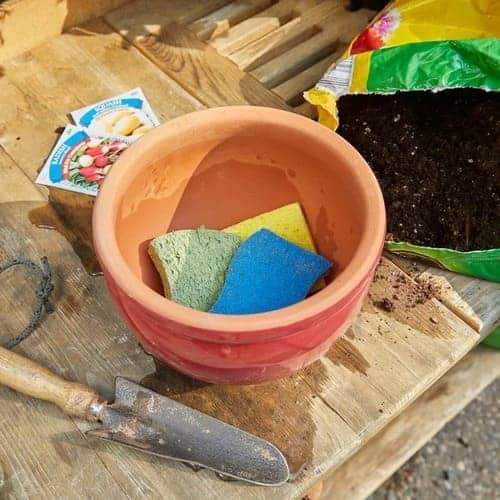 Source: familyhandyman
Source: familyhandyman
To help keep water in reserve, you can place a sponge in the bottom of pots and containers before potting.
#2 Use Diapers
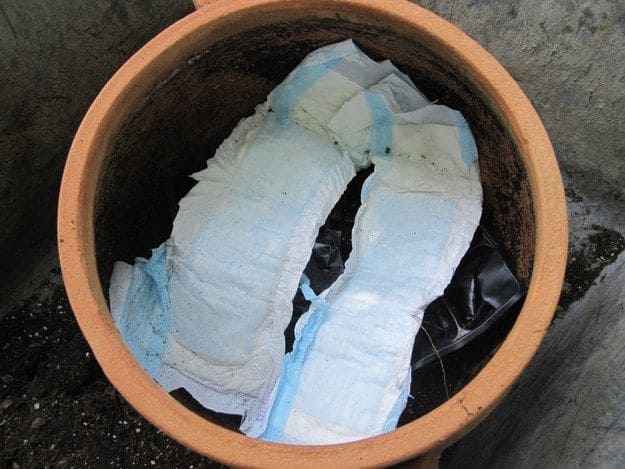 Source: pinterest
Source: pinterest
Using diapers and placing them in the bottom of a potted plant will help your soil retain moisture for a longer time.
#3 Use Epsom Salt
 Source: plantssparkjoy
Source: plantssparkjoy
If your soil needs to be added magnesium. Epsom salt is a useful and cheap way that will improve soil conditions.
#4 Use Coffee Grounds
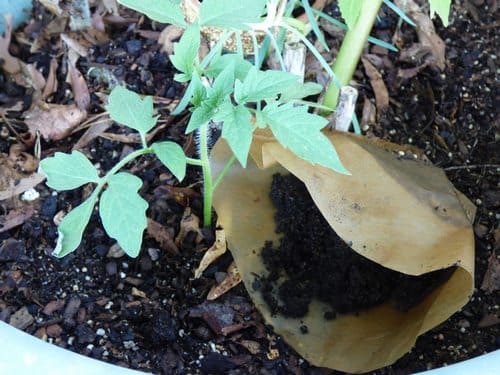 Source: gardeningknowhow
Source: gardeningknowhow
One of the best ways to keep the pH of the soil on the acidic side is to add a few leftover coffee grounds to your soil once a month.
#5 Make Moisten the Ground Before Starting Digging
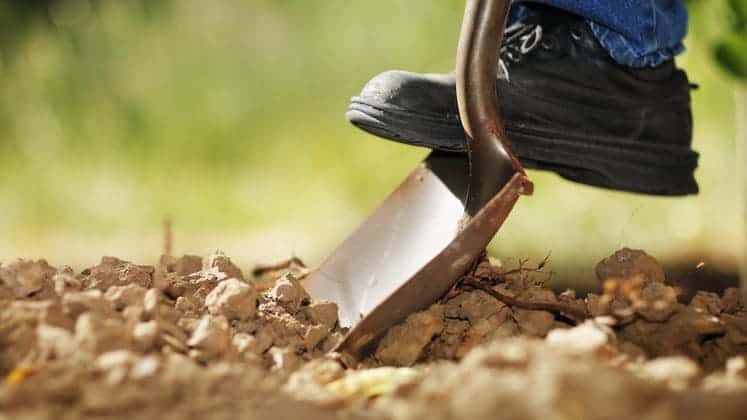 Source: newsroom.edison
Source: newsroom.edison
If your soil is hard to dig, moisten firstly the ground around the base of the plants a few hours before starting digging and your gardening work will be much easier.
#6 Use Eggshells
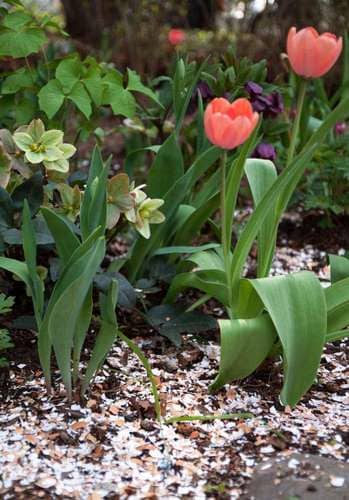 Source: gardenista
Source: gardenista
Simply, you just grind some eggshells, then sprinkle them in the garden, they will provide a high source of calcium content that boost your plant’s growth.
#7 Use Coffee Filters
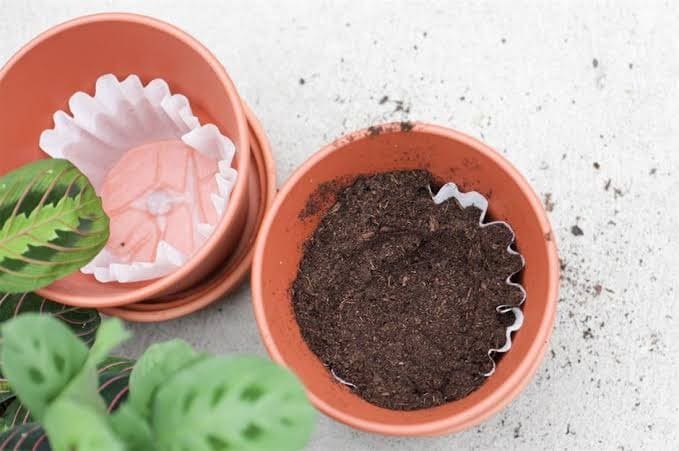 Source: amazingcreation
Source: amazingcreation
If you don’t want to see soil falling through the drainage hole to make those positions dirtier, you can use a coffee filter placed in the bottom of flowerpots.
#8 Use Citrus Peel
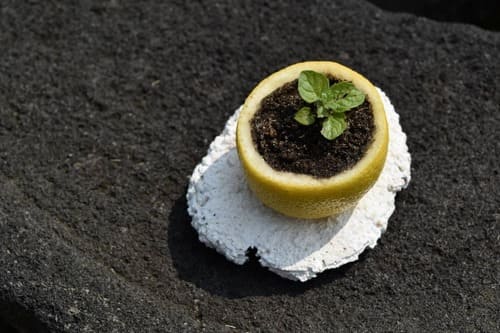 Source: gardencollage
Source: gardencollage
Don’t toss any citrus peel out, they really work well for forming the young plant’s growth from seeds. Don’t forget to poke a hole at the bottom of the peel for drainage.
#9 Use Tablecloth
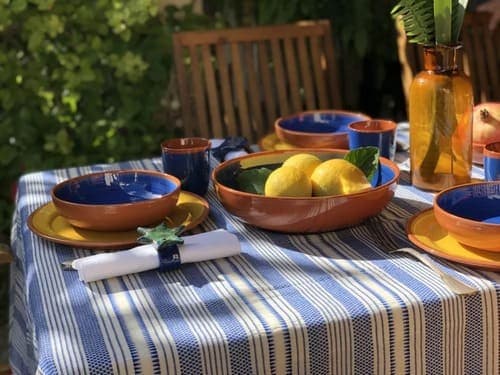 Source: authentiqueliving
Source: authentiqueliving
No need for a wheelbarrow, you also move heavy bags of mulch or other awkward loads easily by using a tablecloth.
#10 Use Plastic Forks
 Source: gardenideasworld
Source: gardenideasworld
These friendly- plastic forks are the easiest-to-find materials to help you protect vegetables, flowers, and other plants from mischievous pets and animals.
-

 GARDEN10 tháng ago
GARDEN10 tháng ago4 Easiest Ways to Get Free Plants
-

 ANIMALS10 tháng ago
ANIMALS10 tháng agoBritish Angler Caught Huge 67-Pound Goldfish in the World
-

 FUNNY10 tháng ago
FUNNY10 tháng ago30 Weirdest Things That People Came Across On The Subway
-

 FUNNY10 tháng ago
FUNNY10 tháng ago30 Funny and Perplexing Photos That Make You Laugh All Day
-

 ANIMALS10 tháng ago
ANIMALS10 tháng agoKindhearted Driver Rescues Skinny Dog Hiding Near Highway Thanks to His Eagle Eye
-

 GARDEN8 tháng ago
GARDEN8 tháng ago30 Shimmering Side Yard Landscape Ideas
-

 FUNNY10 tháng ago
FUNNY10 tháng ago22 Design Fails That Will Make You Laugh Out Loud
-

 ANIMALS10 tháng ago
ANIMALS10 tháng agoMore Than 3 Million People Baffled by Video of Strange Figure on the Beach




